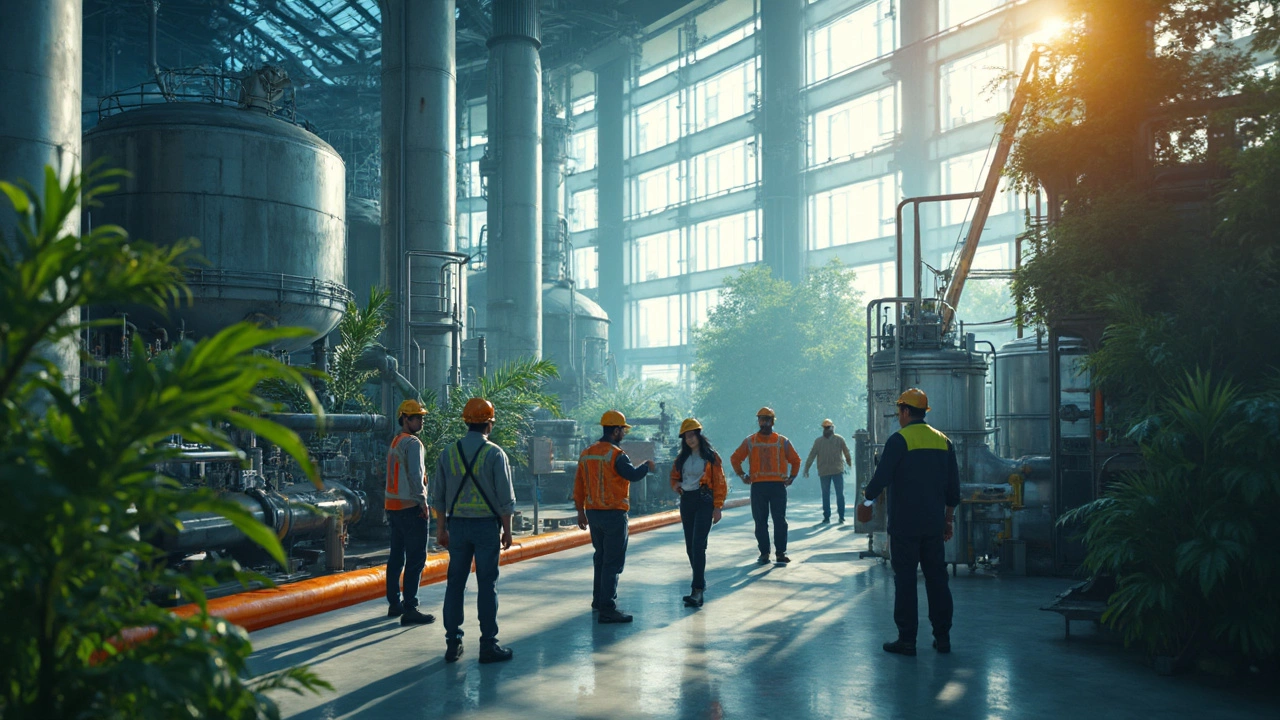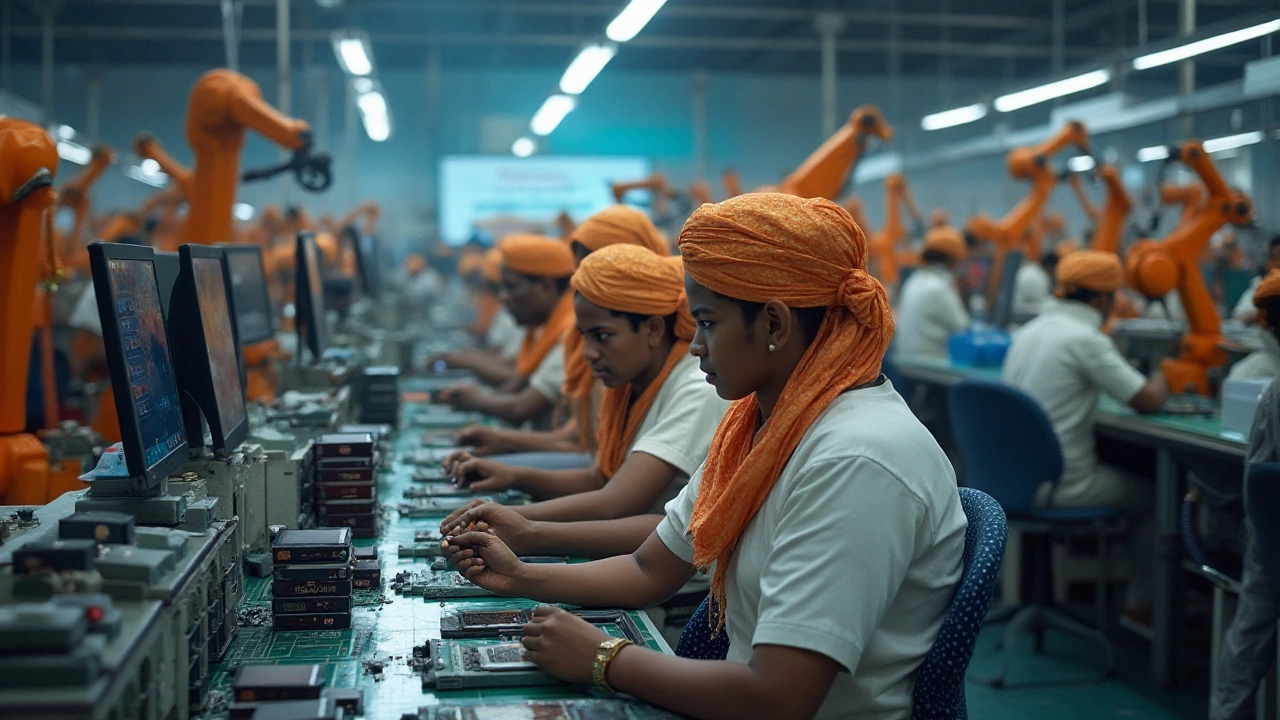Indian Chemical Industry: A Practical Overview
When working with Indian chemical industry, the network of factories that produce chemicals, plastics, fertilizers, and pharmaceuticals across India. Also known as India’s chemical sector, it drives industrial growth, supports agriculture, healthcare, and consumer goods. This ecosystem isn’t a single monolith; it branches into plastics sector, the segment that turns raw polymers into everyday items like packaging, automotive parts, and medical devices, pharmaceutical manufacturing, the branch that creates medicines, vaccines, and bio‑active compounds for both domestic and export markets, and fertilizer production, the part that supplies nitrogen, phosphorous, and potassium blends to keep Indian farms productive. All three rely heavily on petrochemical feedstock, oil‑derived raw materials that provide the building blocks for polymers, acids, and intermediates. In short, the Indian chemical industry encompasses these sub‑sectors, requires steady feedstock supply, and influences agriculture, health, and consumer markets.
Key Drivers Shaping the Landscape
First, government policies like the Production‑Linked Incentive (PLI) scheme push domestic manufacturers to scale up, especially in specialty chemicals and pharma APIs. Second, the rising middle class fuels demand for packaged foods, personal care items, and clean‑energy solutions, which in turn expands the plastics market. Third, climate‑smart agriculture pushes fertilizer makers toward blended, slow‑release formulas that improve efficiency without harming the soil. Together, these forces create a feedback loop: higher demand for end‑products leads to more investment in chemical plants, which then secures jobs and boosts export revenues.
Another important piece is talent. Engineering colleges across India now offer dedicated chemical engineering programs, feeding the sector with skilled graduates who understand process safety, green chemistry, and digital twins. Companies that combine this talent with automation—think AI‑driven process control—see higher yields and lower waste. That means the industry not only grows in size but also becomes more sustainable, a trend buyers worldwide are watching closely.
When you look at the supply chain, you’ll notice three clear connections: petrochemical refineries provide feedstock to plastics manufacturers; pharma plants source specialty solvents from chemical intermediates; and fertilizer units depend on ammonia produced from natural gas. These semantic triples—"Indian chemical industry relies on petrochemical feedstock," "plastics sector creates consumer goods," and "pharmaceutical manufacturing supports health outcomes"—show how tightly knit the ecosystem is. Understanding these links helps investors, policymakers, and entrepreneurs spot opportunities before they become mainstream.
Regional clusters also matter. States like Gujarat and Maharashtra host large integrated complexes where crude oil is refined, petrochemicals are produced, and downstream plastics are extruded—all on the same campus. Tamil Nadu and Karnataka, on the other hand, excel in pharma R&D and high‑value specialty chemicals. Knowing which region specializes in what can guide decisions on where to set up a new plant, source a partner, or hire local expertise.
Environmental pressure is another driver. The government’s push for “green” chemicals encourages firms to adopt bio‑based feedstocks, recycle polymer waste, and cut carbon footprints. Companies that invest in circular economy models—like turning plastic scrap into new resin—are already gaining favor with both regulators and customers.
All these themes—policy incentives, market demand, talent pipelines, supply‑chain links, regional strengths, and sustainability pushes—appear across the articles you’ll find below. Whether you’re curious about daily watering tricks for container gardens (yes, even chemists need a green thumb), looking for high‑pay factory roles, or wondering why cars stall in India, the collection ties back to how the chemical sector underpins many everyday decisions.
Ready to dig deeper? Below you’ll discover practical guides, market analyses, and case studies that unpack each sub‑sector, share real‑world numbers, and offer actionable advice you can apply right now.
Top 5 Chemical Manufacturing Companies in India: Leaders and Insights
Looking for reliable chemical manufacturers in India? This article breaks down the five companies that are shaping the Indian chemical industry right now. You'll get to know who leads the market, what sets them apart, and why so many businesses trust them. Get practical insights, interesting facts, and essential tips for picking the right supplier. Whether you’re in procurement or just want to understand the landscape, here’s what you shouldn’t miss.
- manufacturing
- India
- food processing
- garden tips
- rice cultivation
- government schemes
- balcony garden
- urban gardening
- balcony gardening
- profitable business
- business ideas
- plastic manufacturing
- drip irrigation
- plant care
- steel manufacturing
- sustainable gardening
- startup ideas
- steel industry
- flower gardening
- textile manufacturers






